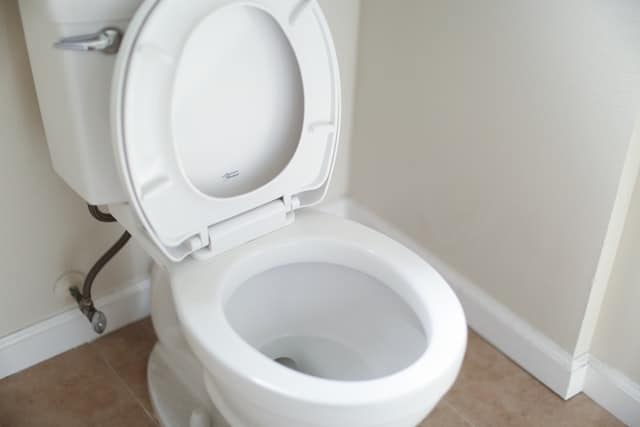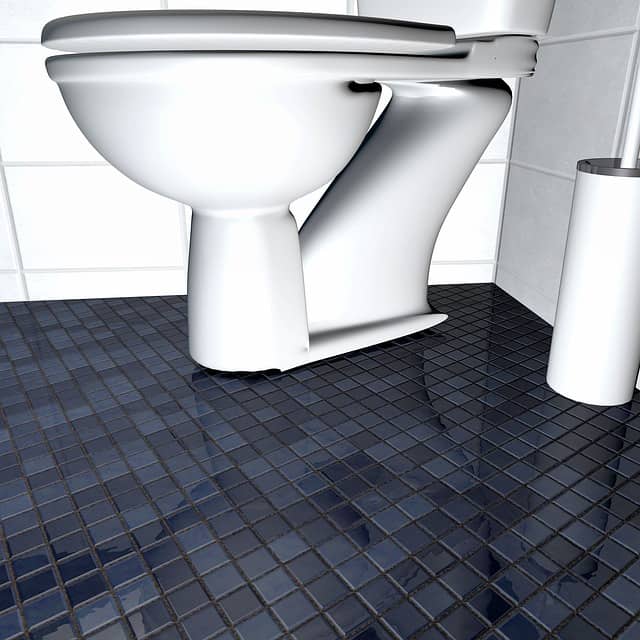There are few things more annoying than sitting at home and hearing a toilet that keeps running. Unless your home is haunted, you have a problem with your toilet that needs to be fixed! It’s a huge waste of both water and money to let it continue unchecked.
The most common causes of a running toilet are as follows: the toilet flapper is worn or has mineral build up on it allowing water to flow underneath it when closed; the fill valve has dirt in it or is faulty and it is allowing water to keep running into the tank; if it’s an older tank, the ballcock could be filling with water which stops it from rising enough to turn the water off completely; the fill valve isn’t set properly to stop the water flow when necessary.
Luckily, toilets are not that complex so just about anyone with the will to do it can fix them. If your toilet is running, you should focus your effort on the toilet tank as that is where the issue will be. Toilet bowls are just that – a bowl – a place for water to enter and exit.
After reading this article, you’ll have an excellent grasp on what you need to do to fix your running toilet.
Okay, let’s get right to it!
What is the Cause of a Running Toilet?
As mentioned above, the issue of a running toilet will reside in the tank. That is where all the mechanics of a toilet are housed. A toilet has two main pieces – the tank and the bowl.
The bowl receives water from the tank as it sits in the bowl waiting to be flushed.
The tank has just two main pieces of equipment that control water from going in and coming out of the tank and bowl.
The fill valve and the flush valve.
If you research a toilet tank, you will see other names such as ball float, flapper, overflow tube, etc. Depending on what type and how old your toilet is, you might or might not have a float ball or flapper.
I have a Kohler toilet and there is no ball float or flapper. There is an oversized tube that has a rubber gasket. The tube goes up and down to allow water into the bowl.
Let’s look at both the fill valve and flush valve with a quick explanation of both and what the issue could be with either.
The Fill Valve – What issues you might have and How to Fix
The fill valve sits on the inside left of the toilet tank when you stand facing it. If you’re still not sure, just follow the flexible water line on the underside (outside) of the tank and see where it attaches to the tank.
The fill valve is on the other side of that location inside the tank. The function of this piece is to allow water into the tank and then shut off when the tank is full. Fill valves can be adjusted to adjust water levels.
Issues and Fixes for a Toilet Fill Valve
- Sometimes fill valves just need to be adjusted. If you watch the valve and it keeps letting in more water than is needed to fill the tank, you can adjust it quite easily. There is a small screw on the top of the fill valve that you turn counterclockwise to allow more water into the tank or clockwise to slow the follow.
- The way to identify if the valve is allowing too much water into the tank and then bowl is that water overflows the top of the tube attached to the flush valve. This is called an overflow tube. When the tank fills, if the water flows over, then the fill valve needs to be turned back to slow the flow of water into the tank.
- Another issue that arises with fill valves is dirt/debris gets inside the filter area. Fill valves allow the water to run into the flush valve. Most fill valves have a mesh filter of some sort in them where the water runs through. Sometimes chunks of dirt or minerals build up and can prevent the fill valve from shutting off 100%.
- I believe this is more of a problem for older toilets and fill valves as newer models have a float built around them that lowers and rises with the water shutting the valve off. Have a look at yours and see what you can find.
- Older toilets will have what is called a ballcock. A ballcock is a plastic ball (usually black in colour) filled with air and is attached to a metal rod that attaches to the fill valve. When the toilet is flushed, the ballcock drops down with the water level. As the water level rises, so does the ballcock. Eventually, the arm and ballcock get to a level where they can’t go any higher and the water is shut off at the fill valve.
- Older ballcocks will start to fill with water. When this happens, it doesn’t rise high enough which means the water doesn’t turn off 100%.
- To fix this, you can unscrew the ballcock from the arm by turning it counterclockwise.
- Shake the water out and then replace by turning it clockwise back onto the metal rod.

The Flush Valve – What Issues You Might Have and How to Fix
The flush valve can be found right in the centre of the tank. It is the gatekeeper of water going into the toilet bowl. It allows water to go in and closes to stop water from going in.
There are two types of flush valves that I am aware of.
One has the old type of flapper on it that lifts up when the toilet is flushed then drops back down as water enters the tank.
The other style which you can find on some toilets like Kohlers is a large tube that raises straight up and drops straight down. These do not have a flapper but a gasket at the bottom of the tube that seals the connection between the tube and base of the tank to stop water from entering the bowl.
Regardless of which style of flush valve you have, they basically run into the same issues.
Issues and Fixes for a Toilet Flush Valve
- If your toilet has a flapper, you must check the flapper to see if it feels like it is still one solid piece or is it starting to break up? It’s rubber and over time, it can start to fall apart. If so, take your old one (noting the make of your toilet, American Standard, etc.) and go get yourself a new one at your local building center.
- If you have a Kohler, there’s a gasket at the bottom of the large tube in the middle of the tank that rises up and down. Rub your fingers on it to see if it feels like it is still there and in solid condition. If it feels like it is coming apart, you’ll have to goa and get a new one at your local building store.
- I have Kohler toilets and was experiencing running toilets. I checked the gasket on both toilets and they were seemingly in good shape, but they were worn down just enough to cause an issue. I replaced both and they worked perfectly afterwards.
- The last place to check, regardless of which flush valve you have, is the seat or bottom of the tank where the flapper or gasket rests. Lift the flapper or tube with the gasket up and rub your finger along the rubber at the bottom/base of the flush valve.
- If it isn’t smooth, then that’s a problem. You’ll have to wipe it clean as minerals from the water can build up in this spot. When something builds up here, it can prevent the rubber from sealing completely which means water will trickle into the toilet bowl.
How to Fix a Toilet Without a Ball Float?
As mentioned above not all toilets, especially new ones, will have a ball float. Just follow my directions as outlined above and you will have your toilet fixed in no time.
How Do You Fix a Toilet Without a Flapper?
Depending on the brand of toilet you have, it might not have a flapper. As mentioned previously in this article, you could have a large tube that has a gasket on the bottom.
Follow my instructions above to fix a toilet without a flapper.
How Do I Know if My Toilet Flapper is Bad?
As previously mentioned, toilet flappers will wear out over time. The rubber becomes brittle and tiny pieces will start to break off.
Or you might find minerals building on the flapper. This can also cause running toilet issues.
Check out my instructions above on what to do.
Can a Running Toilet Cause Damage?
Yes, a running toilet can cause damage. If there is any size of water leak, you’re going to have water continually seeping out onto the floor, causing major water damage.
This could go undetected until your flooring is so damaged that you will need flooring, sub-flooring and even joists replaced. Not to mention, the damage to your wallet due to the increased water bill.
Conclusion
In conclusion, I just wanted to mention that an intermittently running toilet isn’t very hard to troubleshoot. Just remember what the parts are and what their job is in the toilet tank and you should have no problems.
You can save yourself a ton of money by fixing the toilet yourself. You can also save yourself some money when you know what needs to be done and hiring someone to do the job.
Hopefully, this article has been of help to you. Thanks for reading and good luck!
Related Posts


